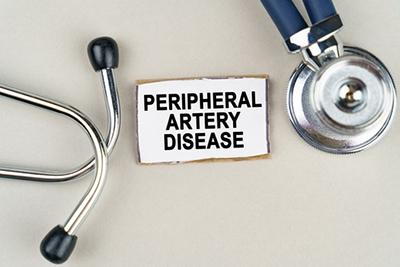
Peripheral artery disease occurs when plaque builds up inside the arteries outside of the heart. The build-up causes the arteries to narrow, which can restrict or cut off blood flow. Common symptoms include pain, numbness, or weakness in the legs. Dr. Ramesh Paladugu and Dr. Mythili Paladugu, the board-certified providers at Texas Vascular and Vein Center in Fort Worth, TX, treat peripheral artery disease.
Symptoms of Peripheral Artery Disease
Many different types of diseases can affect the arteries. Peripheral artery disease (PAD) is one of the most common and involves the arteries that carry blood to areas of the body further away from the heart, such as the legs and feet. When PAD affects arteries in the legs, several different symptoms can develop, including:
- Legs get tired easily
- Cramping in the legs, hips, or buttocks
- Muscle atrophy or weakness in the legs
- Leg pain when physically active that subsides with rest
- Ulcers or sores on the feet or legs that do not heal
- The skin on the legs or feet changes color (turns pale or blue)
- Toes feel numb or cold
- Poor circulation
Peripheral artery disease can also affect the arms, although it is more likely to develop in the legs. Symptoms are similar to PAD that affects the legs and could include pain, heaviness, or cramping in the arms or hands when physically active. Changes in the skin color on the arms or hands can also occur, such as fingers turning blue or pale white. Some common symptoms of artery diseases in general include chest pain or pressure, balance problems, and dizziness.
Risk Factors for Peripheral Artery Disease
Certain factors tend to increase the risk of developing peripheral artery disease. Common risk factors include:
- Being age 65 or older
- Family history of heart disease or stroke
- High blood pressure
- History of diabetes
- High cholesterol
- Obesity
- Smoking
Treatment for Peripheral Artery Disease
If you are experiencing symptoms associated with peripheral artery disease, it is important to see a doctor for diagnosis and treatment. Left untreated, the condition could lead to even more serious health issues, including coronary artery disease, stroke, heart attack, gangrene, and even amputation. The experienced providers at our office in Fort Worth, TX, treat artery disease and related conditions and will develop a treatment plan tailored to your needs.
A treatment plan for peripheral artery disease could include:
- Lifestyle changes
- Regular exercise
- Dietary modifications
- Medications to reduce clotting
- Surgery to open blocked blood vessels
It is important to seek treatment if you are experiencing symptoms associated with peripheral artery disease. Schedule an appointment with Dr. Ramesh Paladugu or Dr. Mythili Paladugu to discuss treatment options for peripheral artery disease by calling Texas Vascular and Vein Center in Fort Worth, TX, at (817) 332-8346.